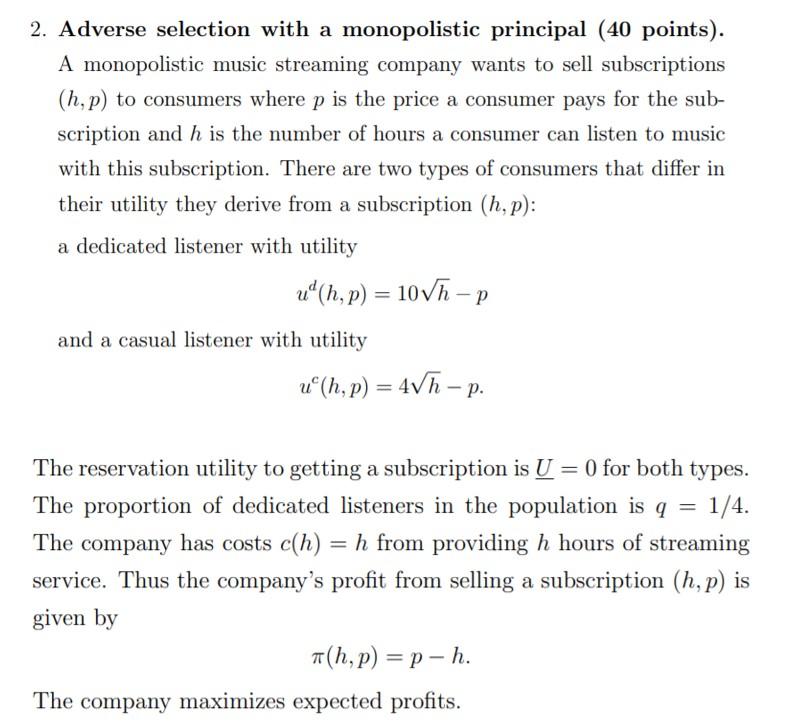

2. Adverse selection with a monopolistic principal (40 points). A monopolistic music streaming company wants to sell subscriptions (h,p) to consumers where p is the price a consumer pays for the sub- scription and h is the number of hours a consumer can listen to music with this subscription. There are two types of consumers that differ in their utility they derive from a subscription (h,p): a dedicated listener with utility u"(h, p) = 107h p and a casual listener with utility u" (h, p) = 4Vh - p. The reservation utility to getting a subscription is U = 0 for both types. The proportion of dedicated listeners in the population is q = 1/4. The company has costs c(h) = h from providing h hours of streaming service. Thus the company's profit from selling a subscription (h, p) is given by # (h,p) = p - h. The company maximizes expected profits. (a) Suppose the company can observe a consumer's type. Which sub- scription does she sell to casual listeners, and which subscription does she sell to dedicated listeners? For each case, state and solve the company's optimization prob- lem. 2. Adverse selection with a monopolistic principal (40 points). A monopolistic music streaming company wants to sell subscriptions (h,p) to consumers where p is the price a consumer pays for the sub- scription and h is the number of hours a consumer can listen to music with this subscription. There are two types of consumers that differ in their utility they derive from a subscription (h,p): a dedicated listener with utility u"(h, p) = 107h p and a casual listener with utility u" (h, p) = 4Vh - p. The reservation utility to getting a subscription is U = 0 for both types. The proportion of dedicated listeners in the population is q = 1/4. The company has costs c(h) = h from providing h hours of streaming service. Thus the company's profit from selling a subscription (h, p) is given by # (h,p) = p - h. The company maximizes expected profits. (a) Suppose the company can observe a consumer's type. Which sub- scription does she sell to casual listeners, and which subscription does she sell to dedicated listeners? For each case, state and solve the company's optimization prob- lem








